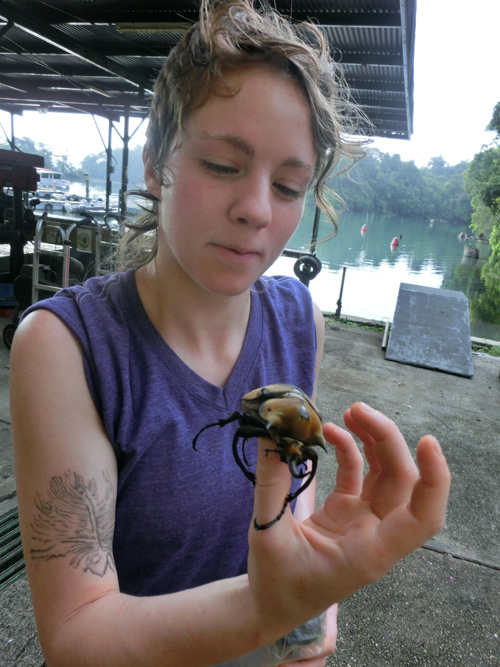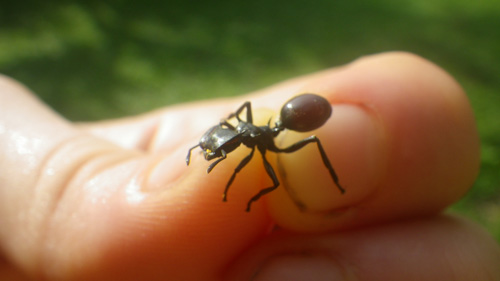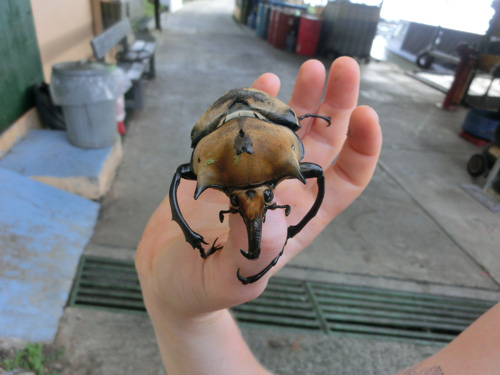Biology major covered-up in tropical ant adventure this summer
Got ants?
One University of Arkansas at Little Rock student is covered in them this summer, working as a field assistant on Barro Colorado Island, located on the man-made Gatun Lake in the middle of the Panama Canal.
An internship and an adventure
Amanda Winters, a senior biology major, said the island is full of scientific surprises.

“The biological diversity in the forest is incredible. It’s almost like if you can imagine that a creature exists, it exists here,” said Winters.
Winters, a University Science Scholar, is exclusively researching ants on the island for former UALR Professor Dr. Steve Yanoviak, who is now at the University of Louisville.
She said she chose the internship because it was the “most adventurous” and most related to the field she would like to pursue.
“Furthermore, I’ve been considering working with Dr. Yanoviak for graduate work and if that winds up working out, I’ll have a field season or two under my belt before beginning graduate school,” she said.
In her first few weeks, Winters surveyed Azteca ant nests, which look similar to paper wasp nests and can get as big as, or larger than, people. She took pictures so that growth rates of nests can be estimated in future years, and she helped record nest abundance.
A search for answers
Another project she hopes to focus on this summer could potentially lead to her doctoral thesis on nematodes, or roundworms, that can infect ant species in the genus Cephalotes, by filling their gasters, or third body segment.

“Infected ants have red gasters, which contrasts with the black coloration of the rest of their bodies,” said Winters. “They stick their gasters up in the air, are slower than uninfected ants, and are smaller, but weigh more, than uninfected ants.”
Winters said the infected and uninfected ants look so different that when originally discovered in the 1980s, they were identified as separate species.
Scientists have theorized that tropical birds prey on the infected ants, thinking they’re berries, and then release roundworm eggs in their feces. The ants, in turn, forage on the bird feces and bring this food source back to their colonies to feed it to their larvae, which then become infected ants with the red gasters.
To confirm that birds spread the roundworm to new colonies of ants, Winters has been tethering infected ants and using a video camera in hopes of capturing images of the bird eating the tethered ant.

She will also need to find roundworm eggs in bird droppings she has plucked from ants returning to their colonies.
“Apart from the biological aspect, it’s been amazing to be around people from all over the world with various backgrounds. Networking is a major part of getting everything out of this experience.”
Winters left May 15 for the internship and will return to Arkansas on Aug. 15.
Keep up with what’s happening; Subscribe to UALR Now.